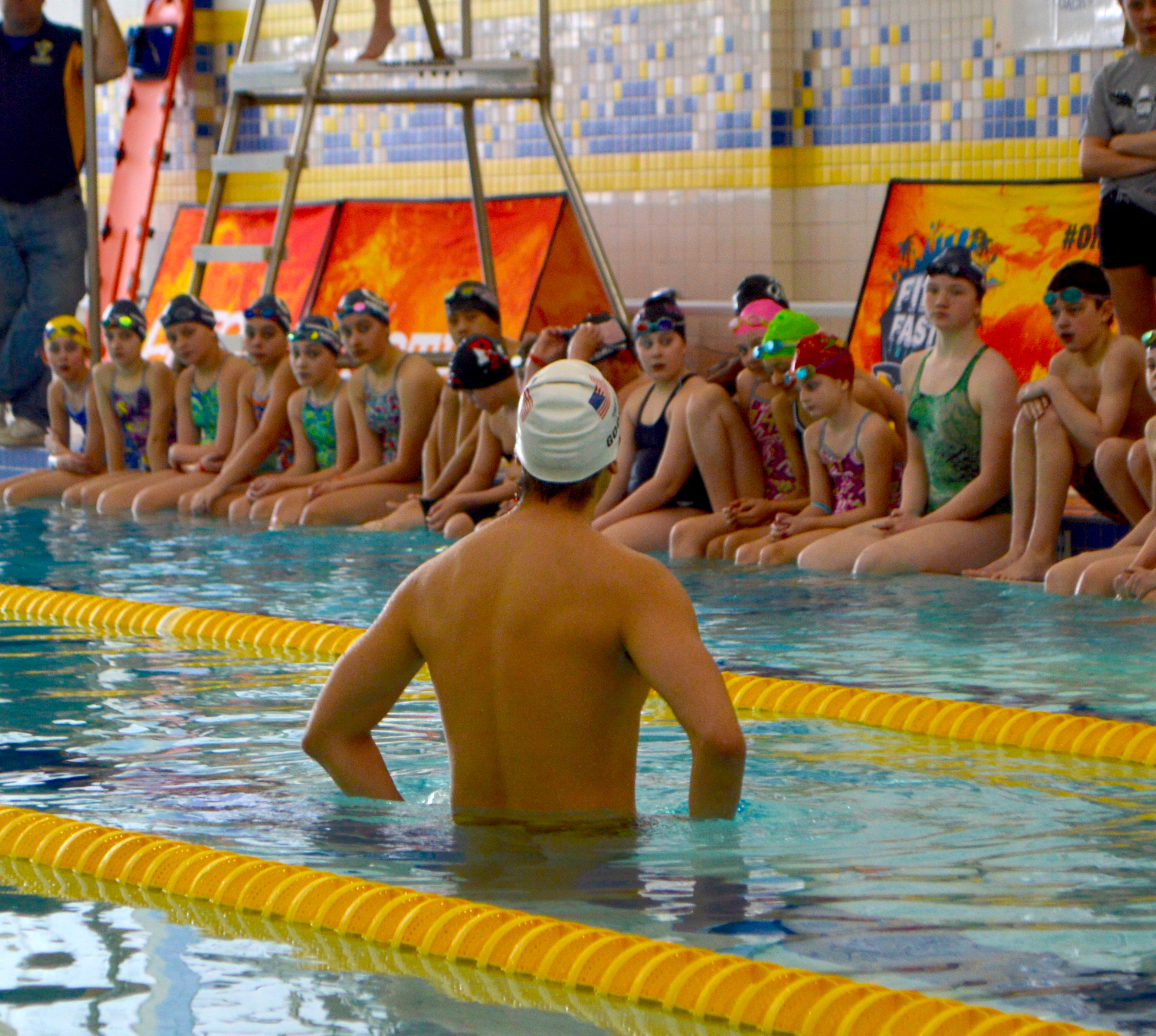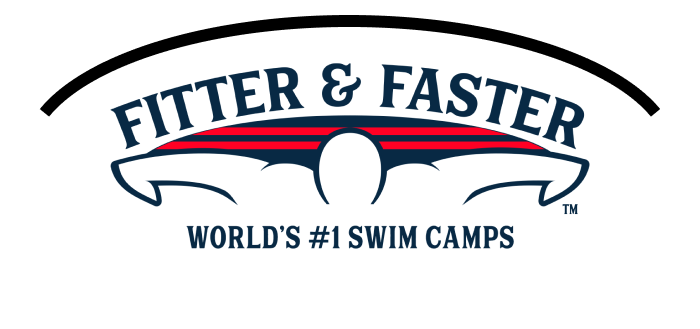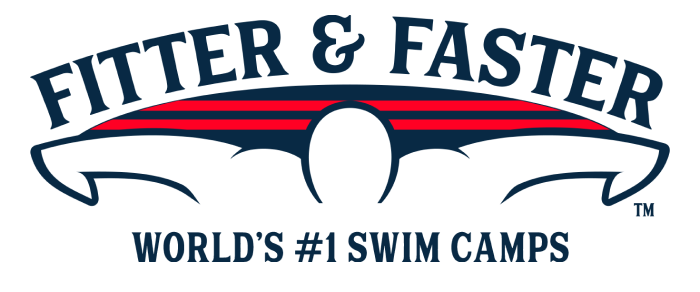Murrieta, California Swim Camp Series (Ages 10 & Over), Murrieta, CA
Murrieta Mesa High School
24801 Monroe Avenue,
Murrieta,
CA 92562
- days
- hours
- minutes
- seconds
Introduction
Fitter & Faster is producing a series of swim camps for competitive swimmers ages 10 & Over at Murrieta Mesa High School in Murrieta, California, throughout 2026!
MURRIETA, CALIFORNIA SWIM CAMP SERIES (Ages 10 & Over)
-> Championship Preparation Swim Camp (January 10 & 11, 2026)
-> Complete Butterfly & Breaststroke Racing Skills Swim Camp (September 26 & 27, 2026)
Click the “Curriculum Menu” below for details about each swim camp.
✔️ Each session has limited availability to provide a focused, high-quality learning environment.
💡 SAVE when you purchase the “Entire Camp Bundle” for your swimmer.
Suggested Participants
Our top priority is to provide a world-class learning experience for all participants at all of our camps. This camp has sessions for swimmers ages 10 & Over. Participants will range from one-year of competitive swimming experience to AAAA times and faster. If you are the parent of a swimmer under the age of 10 and would like for your swimmer to be considered for this camp, please complete this questionnaire.
Select a curriculum below
CHAMPIONSHIP PREPARATION SWIM CAMP: January 10 & January 11, 2026
In this four-session championship prep swim camp, your swimmer will receive world-class guidance from elite Fitter & Faster clinicians, focusing on the details that matter most when it counts. Championship races are won by those who consistently refine and hone their skills, which is why even the best athletes never stop sharpening their starts, turns, underwaters, and transitions. This camp is built to give your swimmer the tools, confidence, and race-ready execution they need to peak when it matters most.
- Session 1 (Saturday, January 10): THE FIFTH STROKE - UNDERWATER DOLPHIN KICKING: In the first session, our Elite Clinicians will work with participants to enhance the fastest sequence for each race lap: streamlines, underwater dolphin kicks & breakouts. Finessing these techniques not only reduces drag and enhances efficiency but also contributes significantly to overall speed and performance in the water!
- Check-in: 9 AM, Camp: 9:15 - 11:45 AM
- Streamline: The streamline - when done properly - is the fastest a swimmer travels while in the water. Proper streamlines are even faster than underwater dolphin kicking. Even the most elite swimmers in the world are constantly working on improving their streamline. Your swimmer will get tips to improve their streamline and a better appreciation of what they need to do on every single wall in practice and in races.
- Initiating Underwater Dolphin Kicking: Top age group and elite swimmers maximize their streamline on every single lap. They don’t start their underwater dolphin kicking while they’re still achieving maximum speed in their streamline! They also don’t want to start the underwater dolphin kicking after their streamline has begun to slow. Your swimmer is going to learn how to time when to begin their underwater dolphin kicking.
- Powerful Underwater Dolphin Kicking: There are a few different techniques that swimmers use when underwater dolphin kicking. The common theme of these techniques is that the best swimmers kick up and down with equal power. We will show your swimmer the different techniques that elite swimmers use and teach them how to implement.
- Number of Underwater Dolphin Kicks: Figuring out the optimal number of kicks off each wall, for each race, is essential to fast swimming. Elite swimmers want to spend only the absolute necessary amount of time underwater to establish speed with each length. They want to avoid losing their breath and taking weak kicks.
- Session 2 (Saturday, January 10): FAST STARTS & BREAKOUTS: In this session, swimmers will work on executing fast starts and carrying momentum through their breakouts. The skill of generating explosive power at the start while effortlessly integrating the skills developed during session 1 will give swimmers a distinct competitive edge!
- Check-in: 12:15 PM, Camp: 12:30 - 3:00 PM
- Block Starts: To ensure an explosive start, a swimmer needs to set themselves up properly on the block. The elite clinicians will work with participants on the optimal positioning of your swimmer’s entire body to allow for a quick reaction time and optimal speed.
- Backstroke Starts: During this session, swimmers will work closely with elite clinicians to actively learn and practice high-performance backstroke starts. Participants will refine their foot, arm, and body positions, focusing on the technique of powering off the wall with an arched form to seamlessly slice through the water with maximum efficiency.
- Water Entry: Starting the race with a smooth entry into the water will boost your swimmer's speed and carry the momentum generated off the block or wall. Becoming skilled at the water entry is crucial for any start and significantly contributes to your swimmers' overall race!
- Underwaters & Breakout Reinforcement: Since fast underwaters are crucial for every start and turn, our clinicians will work with your swimmer on reinforcing the key skills learned during session 1!
- Relay Exchanges: In relays, reaction time is crucial! At this camp your swimmer will learn skills that the best swimmers in the world use to time the “exchange” just right! If we react too quickly, we’ll start before the other swimmer finishes - and we’ll get disqualified. If we start too slow, we can lose our positioning in a race! Learning the proper technique for a well-timed start and an explosive relay dive will make your swimmer a valuable teammate.
- Session 3 (Sunday, January 11): FLIP TURNS, OPEN TURNS & FINISHES: Quick, powerful turns and finishes are crucial to fast times and winning close races. The top age group and elite swimmers aren't using walls just for turning around - they are used to generate speed and momentum going into the next lap. Elite swimmers are constantly working their turns and looking for areas to improve them. Today, we're going to work with your swimmer on taking this crucial part of every race (and practice) to the next level!
- Check-in: 9 AM, Camp: 9:15 - 11:45 AM
- Momentum: At the elite level of swimming, walls aren’t just used for turning around - they are used to generate speed and momentum going into the next lap. Outside of the elite ranks, most swimmers stop or slow down while going into the wall, which kills their momentum! We will work with participants on the intricacies of approaching every wall at top speed and seamlessly initiating their “turn”.
- Flip Turns: The fastest swimmers use walls to generate speed and momentum going into the next lap. Outside of the elite ranks, many swimmers stop or slow down while going into the wall, which kills their momentum! We will work with participants on the intricacies of approaching every wall at top speed and seamlessly initiating their “turn”.
- Open Turns: Elite butterflyers and breaststrokers utilize speed from their last lap to create momentum and even more speed at the beginning of the next lap. Their open turns are actually not “turns”, but more like high-speed pivots. Participants in this session will work on these techniques to have much faster open turns!
- Streamline, Underwater Dolphin Kicking, Breakout Progression: At this session participants will continue to work on the progression covered on Day 1.
- Finishes: Setting yourself up for a fast finish is very similar to setting yourself up for a strong turn in any race. Races are won and lost by hundredths-of-a-second at every swim meet. Many races come down to the last few strokes. At this camp, your swimmer will learn techniques to set themselves up for a well-timed finish when they are still about 10 yards from the wall.
- Session 4 (Sunday, January 11): THE ESSENTIALS OF SPRINTING: Swimming fast requires good technique, efficiency, power, and a hard working athlete. Participants in this session will advance their skills that apply to fast swimming in every stroke. Now is the time for swimmers to establish and cultivate habits to swim their shorter races as fast as possible with good technique that will position them for success as they mature.
- Check-in: 12:15 PM, Camp: 12:30 - 3:00 PM
- Body Position: A competitive swimmer’s body position is the key to fast swimming. Most swimmers are NOT hydrodynamic in the water - and that has a big effect on how fast they “allow” themselves to swim - especially as they get older. Let’s find the right body position for your swimmer.
- Stroke Length: Lengthening their stroke will enable your swimmer to “catch” and hold onto more water to propel them as they swim. Whereas a short stroke is inefficient and not sustainable for very long. The clinicians will work with participants on this important skill for fast swimming.
- Tempo: When sprinting short races young swimmers often tend to take too many strokes (“spin their wheels”) and not “hold onto the water”. At this camp we will find the appropriate tempo to maximize their own personal speed.
- Sprinting: Earlier in the session, your swimmer worked on body position, tempo and length of stroke. Now, we are going to apply those skills to swimming “all out” on top of the water with efficiency and power.
- Sprinting Application: Swimmers at this session will work on applying their newly developed skills during racing scenarios. As with all the other segments of this camp, the clinicians will provide feedback for your swimmer to take home and apply at upcoming practices and meets.
COMPLETE BUTTERFLY & BREASTSTROKE RACING SKILLS SWIM CAMP: September 26 & September 27, 2026
Butterfly and breaststroke are powerful short-axis strokes that demand rhythm, precision, and smart racing skills. At this comprehensive camp, participants will refine every detail - from starts, breakouts, and turns to the unique elements that set these strokes apart: the dolphin kick in butterfly and the pullout in breaststroke. Swimmers will leave equipped with everything they need to race faster and with greater confidence in both strokes.
- Session 1 (Saturday, September 26): STARTS, UNDERWATERS & BUTTERFLY BREAKOUTS: The better a swimmer’s technique is off the starting block, the more speed they will carry into the water. Session 1 of this swim camp will help your swimmer improve their start, underwater dolphin kicking and butterfly breakouts! We will also work on getting the most out of the single allowable dolphin kick for breaststroke. This sequence is not only the fastest part of every race, but it is also the part of the race in which elite swimmers cover the most ground with the most efficiency.
- Check-in: 9 AM, Camp: 9:15 - 11:45 AM
- BLOCK STARTS: To ensure an explosive start, a swimmer needs to set themselves up properly on the block. The elite clinicians will work with participants on the optimal positioning of your swimmer’s entire body to allow for a quick reaction time and optimal speed.
- WATER ENTRY: Starting the race with a smooth entry into the water will boost your swimmer's speed and carry the momentum generated off the block or wall. Becoming skilled at the water entry is crucial for any start and significantly contributes to your swimmers' overall race!
- STREAMLINE: The streamline - when done properly - is the fastest a swimmer travels while in the water. Proper streamlines are even faster than underwater dolphin kicking. Even the most elite swimmers in the world are constantly working on improving their streamline. Your swimmer will get tips to improve their streamline and a better appreciation of what they need to do on every single wall in practice and in races.
- INITIATING UNDERWATER DOLPHIN KICKING: Top age group and elite swimmers maximize their streamline on every single lap. They don’t start their underwater dolphin kicking while they’re still achieving maximum speed in their streamline! They also don’t want to start the underwater dolphin kicking after their streamline has begun to slow. Your swimmer is going to learn how to time when to begin their underwater dolphin kicking for both butterfly and that single dolphin kick in breaststroke.
- POWERFUL UNDERWATER DOLPHIN KICKING: There are a few different techniques that swimmers use when underwater dolphin kicking. The common theme of these techniques is that the best swimmers kick up and down with equal power. We will show your swimmer the different techniques that elite swimmers use and teach them how to implement.
- NUMBER OF UNDERWATER DOLPHIN KICKS: Figuring out the optimal number of kicks off each wall, for each race, is essential to fast swimming. Elite swimmers want to spend only the absolute necessary amount of time underwater to establish speed with each length. They want to avoid losing their breath and taking weak kicks.
- BREAKOUTS: Many swimmers unintentionally add movements in their breakouts that reduce speed by creating drag. In this camp, participants will focus on perfecting their butterfly breakout timing to maintain momentum and power into each lap.
- Session 2 (Saturday, September 26): BUTTERFLY TECHNIQUE: We want your swimmer to establish a rhythmic butterfly. Today we will practice various drills and skills that will enable your swimmer to have flowing hips and a long, more powerful butterfly stroke.
- Check-in: 12:15 PM, Camp: 12:30 - 3:00 PM
- Bodyline: A butterfly race is going to be fastest with a proper bodyline. Even the slightest adjustment of the chin, neck, and/or back can make a huge difference. As swimmers mature in the sport and grow physically, their body position shifts and bad habits can emerge. Participants will learn and practice proper posture and engagement of their core to have a strong foundation for better technique - creating a full-body connection for more hydrodynamic and efficient butterfly strokes.
- Kick: Each butterfly stroke has two kicks to propel the swimmer towards the other end of the pool! If the kicks are properly timed and equally strong, they can positively impact your swimmer’s efficiency and stroke timing! Your swimmer will work on how and when to kick in butterfly for maximum speed.
- Pull: Long and smooth strokes allow swimmers to have a more efficient and fluid butterfly. The pull in butterfly keeps a swimmer accelerating forward. Your clinicians will work with participants to establish an early vertical forearm, “the catch”, enabling the swimmers to put immediate pressure back on the water. Properly completing the stroke keeps the swimmer moving forward efficiently and fast.
- Breath: The timing of the breath in butterfly has a direct relationship on a swimmer’s body position, pull, kick and TIMES! At this camp, we will work with participants on breathing with their chin low to the water... and WHEN to breathe in their stroke cycle so that they develop the most efficient stroke possible!
- Session 3 (Sunday, September 27): BREASTSTROKE TECHNIQUE: Breaststroke is unique—no two swimmers look the same at the elite level. It’s all about reducing resistance, perfecting timing, and finding what works for each individual. We’ll build a foundation and then help each swimmer refine their style for maximum speed and efficiency. No matter your swimmer’s level, this session will strengthen their technique and lead to faster and more efficient breaststroke races… and faster IM’s!
- Check-in: 9 AM, Camp: 9:15 - 11:45 AM
- Bodyline: With the most drag of any stroke, breaststroke demands constant attention to body position. We’ll work on keeping the head, hips, and spine aligned and moving forward at every point in the stroke—especially during the crucial first strokes off each wall.
- Kick: A strong, powerful kick is key in breaststroke. In every breaststroke kick, the ankles should stay outside the knee. The optimal size of the kick varies by each swimmer and is highly dependent on knee and ankle flexibility. Swimmers who view themselves as “bad” at breaststroke kick often only need to focus on decreasing the size of their kick and they can unlock unknown potential.
- Pull: To have a great breaststroke pull, swimmers need to keep their elbows near the surface of the water and out in front of their shoulders at all times. Once the hands turn in and begin the “recovery” phase they need to move quickly to full extension in front of the body to reestablish bodyline. The pull pattern varies based on a swimmer’s kick. We’ll help swimmers match their pull width and tempo to their natural kick style—maximizing propulsion and efficiency.
- Timing: Elite breaststrokers are constantly tweaking their timing to achieve the ideal combination of power and efficiency. Our clinicians will introduce key drills that help connect the pull, kick, breath, and glide into a smooth, powerful cycle.
- Session 4 (Sunday, September 27): OPEN TURNS, BREASTSTROKE PULLOUTS & FINISHES: Open turns are key in butterfly and breaststroke, and even small tweaks can make a big difference. Since they’re usually learned early, they can be clunky without continued improvement. This camp will focus on making turns smoother and faster, plus we’ll work on breaststroke pullouts, breakouts, and timing the finish—skills that often get overlooked but can help win close races.
- Check-in: 12:15 PM, Camp: 12:30 - 3:00 PM
- OPEN TURNS: Elite butterflyers and breaststrokers utilize speed from their last lap to create momentum and even more speed at the beginning of the next lap. Their open turns are actually not “turns”, but more like high-speed pivots. Participants in this session will work on these techniques to have much faster open turns!
- MOMENTUM: The fastest swimmers use walls to generate speed and momentum going into the next lap. Outside of the elite ranks, many swimmers stop or slow down while going into the wall, which kills their momentum! This is especially true in fly and breaststroke where strokes are naturally longer and both arms move together. We will work with participants on the intricacies of approaching every wall at top speed and seamlessly initiating their “turn”.
- BREASTSTROKE UNDERWATER PULLOUT: The breaststroke pullout is an important and unique part of every breaststroke race. We will work with participants on minimizing resistance in their pull-outs and establishing maximum speed. The pullout can be used strategically, depending on the distance of the race, to cover more ground before breaking out.
- BREASTSTROKE BREAKOUTS: Breaststroke breakouts are also a unique and important skill. After the pullout, swimmers need to keep their momentum going, time their rise to the surface just right, and keep their head moving forward—not up—to help bring their hips to the surface and stay in a good line.
- BUTTERFLY & BREASTSTROKE FINISHES: Setting up for a fast finish is a lot like preparing for a strong turn—it all comes down to timing and positioning. In butterfly and breaststroke, where both arms move forward simultaneously, that timing can be especially challenging. At this camp, your swimmer will learn specific techniques to make adjustments and consistently set up for a well-timed, confident finish.
SESSION START TIMES FOR ALL SESSIONS:
- Sessions 1 & 3: Check-in 9 AM, Camp 9:15-11:45 AM
- Sessions 2 & 4: Check-in 12:15 PM, Camp 12:30-3 PM
SUGGESTED PARTICIPANTS
Our top priority is to provide a world-class learning experience for all participants at all of our camps. This camp has sessions for swimmers ages 10 & Over. Participants will range from one-year of competitive swimming experience to AAAA times and faster. If you are the parent of a swimmer under the age of 10 and would like for your swimmer to be considered for this camp, please complete this questionnaire.
ASK QUESTIONS
Swimmers and parents are invited to ask the clinicians questions during a Q&A session. Gain insight into their training regimen, diet and nutrition, and recovery tactics.
WATCH THE CLINICIANS
Observe clinicians swim at full speed and demonstrate a progression of perfectly executed drills to achieve powerful, efficient and fast swimming.
PUT YOUR SKILLS TO THE TEST
Throughout the camp, swimmers will practice what they've learned with some of the world's most elite Swimmer Clinicians and coaches!
Take a photo, get autographs, and chat with your clinicians!

Elite Clinician
Fitter and Faster clinicians are Olympians and National Team members who have achieved at the highest level of the sport of swimming... and who have the unique skill to teach what they know from a technical perspective to swimmers of all ages and abilities.
Inquisitive, Educated Swimmers are Faster Swimmers! Sign up today!






